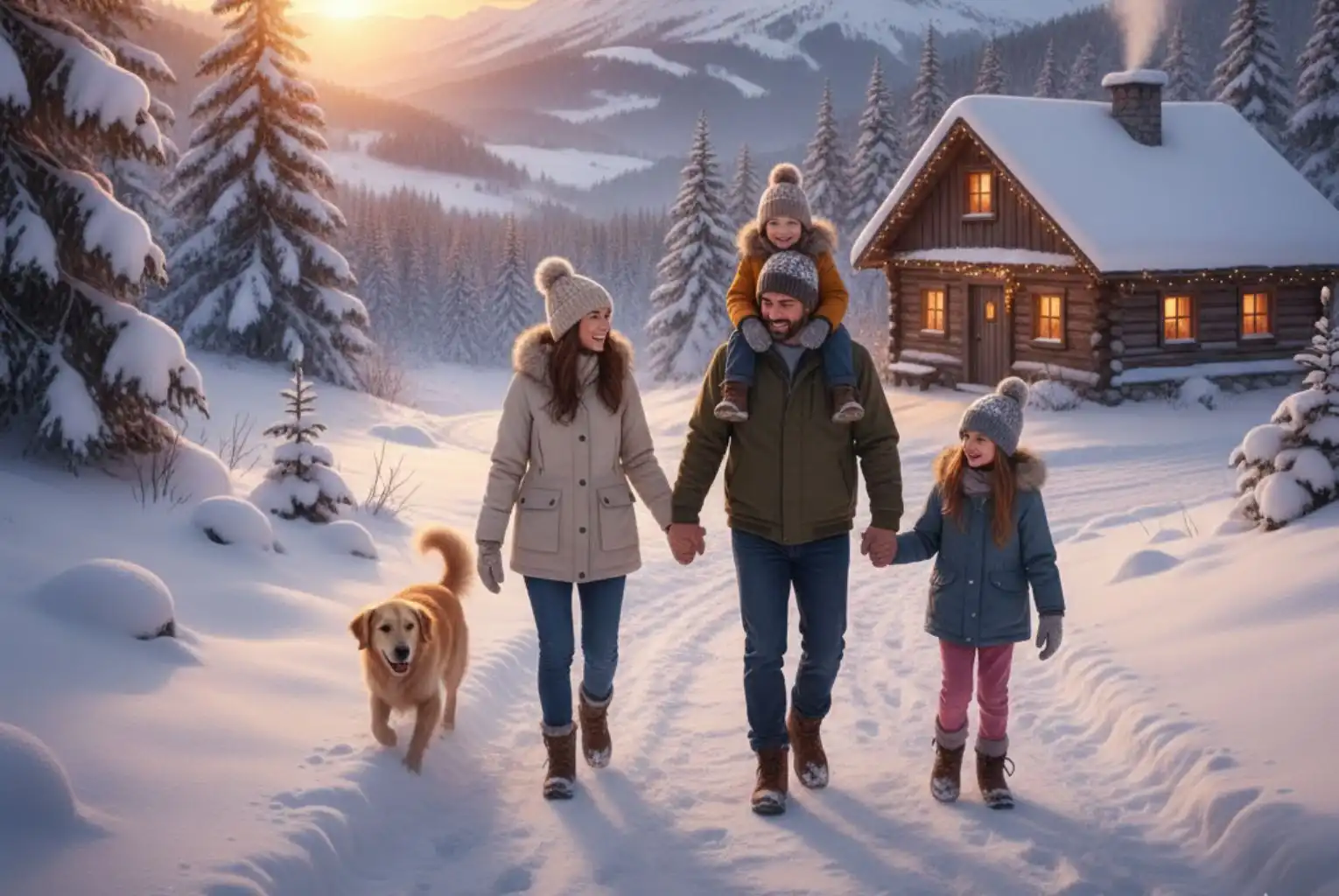WHAT SHOULD YOU EXPECT WHEN MOVING TO A DIFFERENT CLIMATE?

Introduction
Moving to a new location typically brings new opportunities, fresh surroundings, and sometimes a completely new environment to adapt to. Among the biggest changes, moving to a different climate can be exciting as well as challenging. The climate affects how we live, what we wear, what we eat, and how we interact. Understanding what lies ahead ensures you settle in with less stress and more confidence.
The Initial Adjustment Phase
The initial few weeks after moving can be overwhelming as adapting to a different climate can affect your mood, energy levels, and routine. In colder areas, you may need to adjust your diet or commute, as hot climates usually require more water in addition to sun safety. Your body requires time to adjust to the changing weather conditions, and so it's normal to feel a bit uneasy at first.
Practical Tips for Moving to a Different Climate
Planning ahead makes adaptation easier. Some helpful tips for moving to a different climate include studying seasonal weather patterns, rearranging your wardrobe prior to moving, and arranging essentials such as fans, heaters, or air purifiers, based on the destination you're heading to. In addition, talking to the locals could give insight into how people naturally deal with extreme weather.
Relocating to a New Climate Zone
In the case of many people, moving to another climate will require a thorough understanding of risky weather conditions. People who move from coastal regions to desert areas, for instance, must be aware of heat waves, whereas those living in mountains need to be prepared for changes in altitude. Families need to pay attention, as children typically adjust more slowly than adults. Awareness helps you anticipate changes instead of being surprised by them.
Preparing Yourself and Your Home
When you are preparing for a new climate, you need more than just the right clothes. Your home should also be climatically ready. In colder areas, you need insulation and reliable heating systems, while hot, humid areas might require ventilation, dehumidifiers, or windows with shade. Making sure your living space is set up correctly will improve comfort and decrease cost in the end.
Challenges of Moving to a Different Climate
There are a variety of difficulties in changing climates that one might not anticipate. They could be a result of dry skin, allergies, or fatigue. In terms of mental health, you may need to deal with shorter hours of daylight in colder climates or intense heat in warmer areas. Preparing for these shifts will allow you to manage them in a proactive manner rather than reacting afterward.
Smart Packing for a New Climate
The most crucial actions involve packing for a new climate. Instead of carrying everything, select the most versatile and necessary things. In colder climates, make sure you have warm layers, insulated boots, and warm accessories. For warm or tropical climates, breathable cotton, light footwear, and rain gear are must-haves. Don’t forget health supplies, skincare, and any climate-specific household items.
Considering the Health Effects of Climate Change
The adverse health effects caused by changes in the climate can be evident following a move. A sudden change could result in asthma, allergies, or joint discomfort. Patients with existing conditions need to consult their physician before making the change. Establishing healthy habits, such as eating seasonal food and exercising regularly, helps your body adapt to changes more easily.
Adapting to a New Weather Pattern
Patience is essential when adapting to a new weather pattern. It is possible that you will need to alter your outdoor routine, wear protective gear, or establish new routines for hydration and rest. Observing how locals handle the seasons can be an excellent guide in building your own comfort zone in the new environment.
Lifestyle and Family Adjustments
For many, one of the biggest changes is what to expect when moving from a cold climate to a hot climate. Commonly, experiences include sunburn, dehydration, and changing energy levels. Making cool indoor spaces and keeping a steady pace with outdoor activities can help.
Beyond that, you should consider strategies to adapt to a new environment for your children. Children can take longer to settle in, so make sure you have suitable clothes and a comfortable bed and slowly introduce them to routines outdoors. Fun with bright outdoor gear can make the transition easier.
Dressing for Comfort and Survival
A frequent concern is what clothes to wear if you are moving to a tropical environment. The lighter fabrics, such as linen and cotton, as well as sandals, wide-brimmed hats, and sunglasses, are essential. Also, those who move to colder regions should focus on good layering rather than heavy packing. Finding out what's best for your climate can help you feel comfortable and confident.
Surviving Your First Year in a New Climate
The first 12 months are the most difficult. Surviving your first year in a new climate requires a lot of flexibility and willingness to adapt. Be aware of local customs, try seasonal activities, and don’t hesitate to ask for advice. Over time, routines that once felt challenging become second nature, and the new climate will be a familiar one.
Conclusion
Moving to a new environment is a process of growth and adaptation. Although the process may seem overwhelming at first, with a little preparation and perseverance, you'll become comfortable in your new home. From packing wisely to adjusting health routines and preparing your home, each step helps make the transition easier.
At PM Relocations, we understand that moving isn't simply moving your belongings around--it's about getting ready for a new style of living. With our expertise and customized services, we will ensure that the transition into a new environment and home is smooth, easy, and full of confidence.
Our Blogs

HOW TO START A ROUTINE AFTER SHIFTING: A REALISTIC GUIDE TO FEELING SETTLED AGAIN
Moving to a new place can disrupt even the most well-established routines, leaving you feeling unsettled and overwhelmed. Whether you’ve relocated for work, family, or a fresh start, rebuilding a daily rhythm is essential to feeling grounded again. This realistic guide walks you through simple, practical steps to create a comfortable routine, manage your time better, and slowly turn your new house into a familiar home. From organizing your space to setting healthy habits, here’s how to feel settled with confidence after shifting.

WHERE CAN YOU FIND THE BEST FAMILY-FRIENDLY WINTER DESTINATIONS IN INDIA FOR A COZY GETAWAY?
As the winter chill sweeps across the landscape, India transforms into a wonderland of frosty peaks, snow-laden valleys, and crisp, clean air. For families yearning for a magical escape, the country offers an array of enchanting destinations perfect for a cozy getaway. Imagine sipping hot chocolate by a crackling fireplace after a day of building snowmen, or witnessing breathtaking sunrises over a blanket of white. From the thrilling slopes of the Himalayas to the serene beauty of lesser-known hill stations, discover where you can create unforgettable memories and experience the joy of a truly family-friendly winter vacation in India. This guide will help you uncover the best spots for adventure, relaxation, and heartwarming moments that will last a lifetime.

MOVING TO NAGPUR: A COMPLETE GUIDE FOR A SMOOTH RELOCATION EXPERIENCE
Planning a relocation to Nagpur? This comprehensive guide provides everything you need for a stress-free move, covering essential topics from finding the best neighborhoods and understanding the cost of living to navigating local transport and setting up utilities. Get ready for a smooth start in the Orange City!



